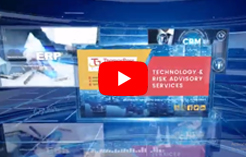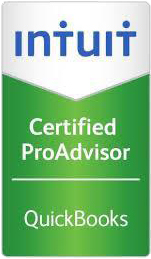
Tax strategies for Businesses
Tax strategies for Businesses

Tax Planning for Small Business
Tax Planning for Small Business
Tax planning is the process of looking at various tax options to determine when, whether, and how to conduct business and personal transactions to reduce or eliminate tax liability.
Many small business owners ignore tax planning. They do not even think about their taxes until it is time to meet with their accountants, but tax planning is an ongoing process and good tax advice is a valuable commodity. It is to your benefit to review your income and expenses monthly and meet with your CPA or tax advisor quarterly to analyze how you can take full advantage of the provisions, credits, and deductions that are legally available to you.
Although tax avoidance planning is legal, tax evasion - the reduction of tax through deceit, subterfuge, or concealment - is not. Frequently what sets tax evasion apart from tax avoidance is the IRS's finding that there was fraudulent intent on the part of the business owner. The following are four of the areas the IRS examiners commonly focus on as pointing to possible fraud:
- Failure to report substantial amounts of income such as a shareholder's failure to report dividends or a store owner's failure to report a portion of the daily business receipts.
- Claims for fictitious or improper deductions on a return such as a sales representative's substantial overstatement of travel expenses or a taxpayer's claim of a large deduction for charitable contributions when no verification exists.
- Accounting irregularities such as a business's failure to keep adequate records or a discrepancy between amounts reported on a corporation's return and amounts reported on its financial statements.
- Improper allocation of income to a related taxpayer who is in a lower tax bracket such as where a corporation makes distributions to the controlling shareholder's children.
Tax Planning Strategies
Countless tax planning strategies are available to small business owners. Some are aimed at the owner's individual tax situation and some at the business itself, but regardless of how simple or how complex a tax strategy is, it will be based on structuring the strategy to accomplish one or more of these often-overlapping goals:
- Reducing the amount of taxable income
- Lowering your tax rate
- Controlling the time when the tax must be paid
- Claiming any available tax credits and deductions
- Controlling the effects of the Alternative Minimum Tax
- Avoiding the most common tax planning mistakes
In order to plan effectively, you'll need to estimate your personal and business income for the next few years. This is necessary because many tax planning strategies will save tax dollars at one income level, but will create a larger tax bill at other income levels. You will want to avoid having the "right" tax plan made "wrong" by erroneous income projections. Once you know what your approximate income will be, you can take the next step: estimating your tax bracket.
The effort to come up with crystal-ball estimates may be difficult and by its very nature will be inexact. On the other hand, you should already be projecting your sales revenues, income, and cash flow for general business planning purposes. The better your estimates are, the better the odds that your tax planning efforts will succeed.
Maximizing Business Expenses
Business meal expenses are legitimate deductions that can lower your tax bill and save you money, provided you follow certain guidelines. To qualify as a deduction, business must be discussed before, during, or after the meal and the surroundings must be conducive to a business discussion. For instance, a small, quiet restaurant would be an ideal location for a business dinner. A nightclub would not.
Under the Tax Cuts and Jobs Act of 2017, the deduction remains at 50 percent for taxpayers who incur food and beverage expenses associated with operating a trade or business. Employee meals while on business travel also remain deductible at 50 percent. For tax years 2018 through 2025, the 50 percent deduction expands to include expenses incurred for meals furnished to employees for the convenience of the employer as well. Amounts after 2025 are not deductible, however.
Under the TCJA, the deduction for business entertainment expenses is eliminated. Meals still qualify at 50 percent, but costs must be listed separately.
Important Business Automobile Deductions
If you use your car for business such as visiting clients or going to business meetings away from your regular workplace you may be able to take certain deductions for the cost of operating and maintaining your vehicle. You can deduct car expenses by taking either the standard mileage rate or using actual expenses. The mileage reimbursement rate for 2020 is 57.5 cents per business mile (down from 58 cents per business mile in 2019).
If you own two cars, another way to increase deductions is to include both cars in your deductions. This works because business miles driven is determined by business use. To figure business use, divide the business miles driven by the total miles driven. This strategy can result in significant deductions. Whichever method you decide to use to take the deduction, always be sure to keep accurate records such as a mileage log and receipts.
Increase Your Bottom Line When You Work at Home
The home office deduction is quite possibly one of the most difficult deductions ever to come around the block. Yet, there are so many tax advantages it becomes worth the navigational trouble. Here are a few common tips for home office deductions that can make tax season significantly less traumatic for those of you with a home office.
Try prominently displaying your home phone number and address on business cards, have business guests sign a guest log book when they visit your office, deduct long-distance phone charges, keep a time and work activity log, retain receipts and paid invoices. Keeping these receipts makes it so much easier to determine percentages of deductions later on in the year.
Section 179 expensing for tax year 2020 allows you to immediately deduct, rather than depreciate over time, $1.04 million of the first $2.59 million of qualifying equipment placed in service during the current tax year. Equipment can be new or used and includes certain software. All home office depreciable equipment meets the qualification. Indexed to inflation for tax years after 2018, the deduction was enhanced under the Tax Cuts and Jobs Act of 2017 to include improvements to nonresidential qualified real property such as roofs, fire protection, and alarm systems and security systems, and heating, ventilation, and air-conditioning systems.
The "Bonus Depreciation" for qualified assets (new equipment only--no used equipment and no software) placed in service for tax years 2015, 2016, and through September 26, 2017, is 50 percent. Businesses with eligible property placed in service after September 27, 2017, and before January 1, 2023, are allowed to immediately deduct 100 percent of the cost. The bonus depreciation will be phased downward over a four-year period: 80 percent in 2023, 60 percent in 2024, 40 percent in 2025, and 20 percent in 2026.
Some deductions can be taken whether you qualify for the home office deduction itself. Consider meeting with a tax professional to learn more about home office deductions.

The support you deserve
We provide excellent support through professionalism, responsiveness and quality.
Read More
Security You can trust
Your data is safe with us. Our Client Portal protects you with 14 full layers of security.
Read More
Service you rely on
We offer a broad range of services to help clients secure a sound financial future.
Read MoreBusiness Transformation and Strategy
CAPITAL MARKET
FINANCIAL CHARTS
Get real-time information and market insights
Develop A Cloud Technology Strategy that Powers Your Bottom Line
With our full range of industry leading products, we can assess complex situations, and provide the best technology tools to address your future growth.
Learn More



